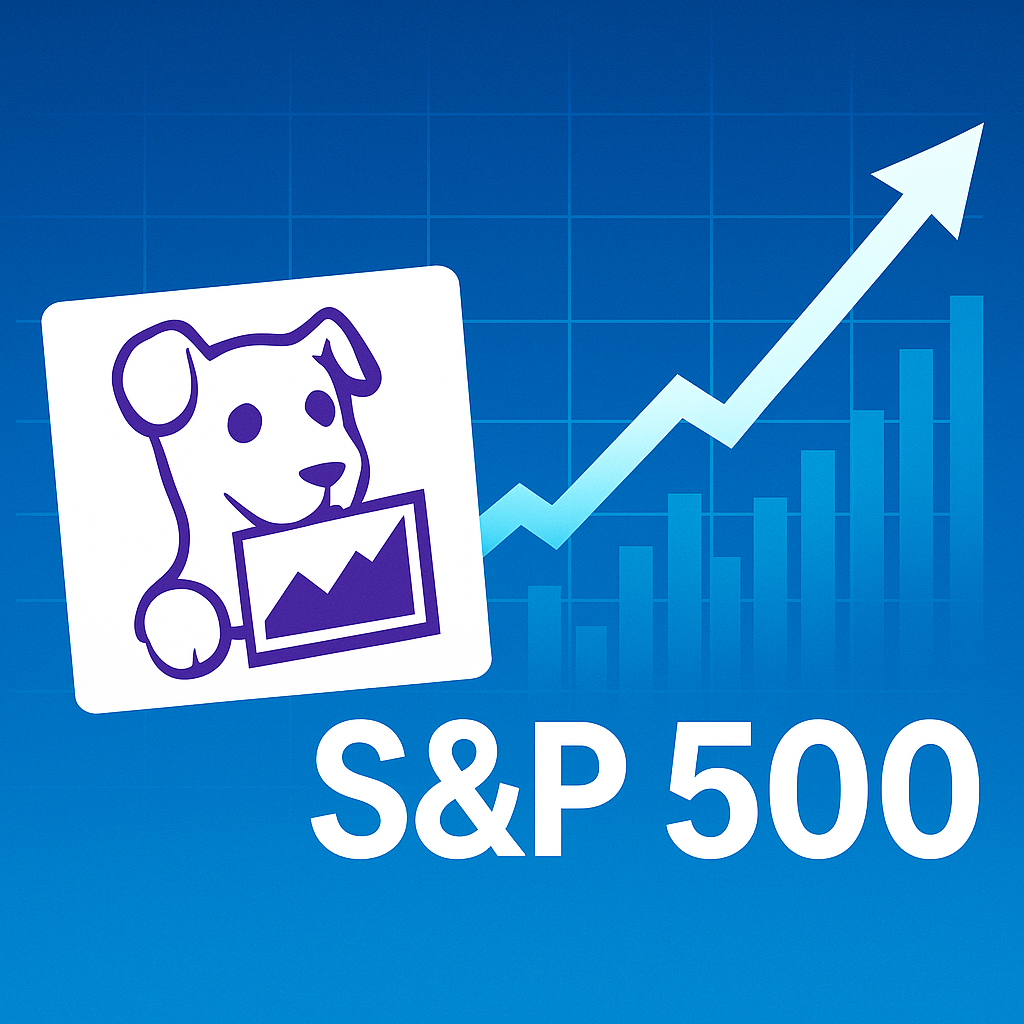Datadog (NASDAQ: DDOG) surged nearly 9% in trading this week after news broke of its forthcoming inclusion in the S&P 500 index, replacing Juniper Networks following its acquisition by Hewlett Packard Enterprise. The jump in share price underscores just how influential index membership can be — not just in terms of visibility, but in actual capital flows and long-term investor positioning.
This development positions Datadog among the elite group of public U.S. companies recognized for scale, liquidity, and industry impact. As the market recalibrates for this inclusion, investors are now asking a timely question: Which tech companies are next in line for index upgrades — and how can we position accordingly?
Why Datadog’s Inclusion Matters
Founded in 2010, Datadog is a cloud-native monitoring and security platform for infrastructure, applications, logs, and more — a key enabler for digital transformation and DevOps strategies across industries. The company has grown rapidly since going public in 2019, with a market cap now exceeding $40 billion.
According to Investopedia, Datadog’s elevation to the S&P 500 is more than symbolic. Index inclusion triggers:
- Passive investment flows from ETFs and mutual funds tracking the S&P 500 (e.g., SPY, VOO)
- Heightened analyst coverage and institutional attention
- Enhanced credibility among global allocators
Bloomberg data estimates that inclusion in the S&P 500 can lead to inflows of $4 billion to $8 billion in the short term, as index funds rebalance. For a mid-cap tech stock, that’s a seismic catalyst.
Performance and Fundamentals
Datadog has consistently outperformed many of its SaaS peers on key growth metrics. In Q1 2025, the company posted:
- Revenue of $652 million, up 28% year-over-year
- Non-GAAP operating margin of 24%
- Continued expansion in large enterprise deals, particularly within cloud-native and hybrid environments
Moreover, Datadog continues to expand its platform with new AI-powered observability tools, security modules, and cloud cost optimization services — all of which are becoming mission-critical for enterprise IT teams.
Why This Matters for Investors
S&P 500 inclusion isn’t just about the headline — it typically results in stronger liquidity, lower volatility, and elevated institutional ownership. These factors can stabilize a company’s stock over time, making it more attractive to long-term investors.
In addition, Datadog’s index inclusion reflects broader trends in the technology sector:
- The growing dominance of cloud infrastructure monitoring
- Increased integration of AI and cybersecurity features into DevOps workflows
- Consolidation of tools under unified platforms, reducing the need for siloed vendors
This makes Datadog a proxy for digital transformation and enterprise modernization, both of which remain secular investment themes.
Future Trends to Watch
- Next-Wave Index Candidates: Investors should watch names like Snowflake (SNOW), CrowdStrike (CRWD), and MongoDB (MDB) — high-growth tech firms with growing market caps and strong fundamentals — as potential future additions to major indices.
- ETF Rebalancing Effects: Expect short-term volatility and increased volume in Datadog’s stock ahead of its official inclusion date as fund managers rebalance.
- Competitive Response: Companies like New Relic and Splunk (now owned by Cisco) may face renewed pressure as Datadog cements its position as a category leader. This could lead to further M&A activity in the observability and security spaces.
- AI Integration in SaaS: As Datadog rolls out more AI features, it positions itself to benefit from broader enterprise adoption of machine learning, particularly in IT automation and anomaly detection.
Key Investment Insight
Datadog’s S&P 500 inclusion is a milestone that enhances its investability and confirms its role as a core infrastructure player in the digital economy. Investors should view this as both a validation of the company’s growth trajectory and a sign that index-driven investing dynamics remain powerful catalysts.
Those looking to capitalize should explore high-quality mid-cap tech firms with accelerating fundamentals and potential index eligibility — not just for growth, but for the passive capital tailwinds that follow.
For more timely insights, market analysis, and strategic investment coverage across tech and beyond, follow MoneyNews.Today — your source for smart financial news, daily.





